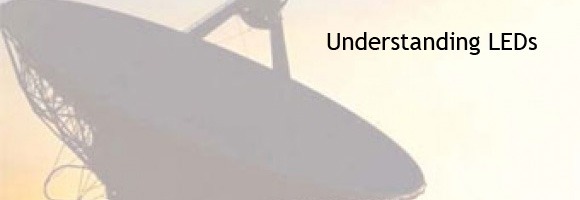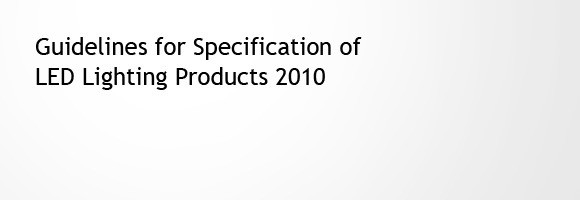Introduction
IDA wants to educate people on the importance of quality outdoor lighting and it is always good to start with the basics. Understanding how the eye works is the first step to good lighting. Lighting should be designed to help us see better, but if we don’t know how the eye works than it becomes too easy to make assumptions that could in some instances lead to poor vision. One all too common assumption is the more light the better, yet after learning about the eye’s sensitivity curve and the changes that take place in vision when going from one lighting condition to the next, this assumption is proven wrong. Once light enters the eye there is a whole internal process that takes place, one that does not often get much thought. When lighting is designed with this process in mind, we have optimum vision and a much more eye-friendly nighttime environment.
When we think of the human eye, we most likely conjure up an image of the eyes we see when we look at ourselves in the mirror or when we look at someone’s face. The eye that we are familiar with is only just one part of the complete structure of the eyeball itself.

If you look into someone’s eye you can easily make out several structures. (Fig.1) These structures are the pupil, iris, and sclera. The pupil is the dark part of the eye; it is the opening through which light passes through to the retina. It is dark because light is entering the pupil but no light is exiting through it, making it appear black to those who look at it.
The iris, which is the pigmented part of the eye giving it its col or, controls how large the pupil is and therefore how much light is entering the eye. The sclera, which is the white part of the eye, continues all the way to the back of the eye, forming a supporting structure for the eyeball. There is also the cornea, which is the transparent top membrane of our eye, providing both protection for the eye and bending the light as it passes through it.
These parts make up the area of the eye that have direct contact with the outside world, or the light that forms what we are “looking” at. Once the light waves enter the eye through the pupil there are many processes that take place behind the scenes before vision can occur.
The Importance of Light
Most of the time we take sight for granted. It seems so easy, we open our eyes and images appear before us. However, when you stop to think about what is actually taking place when we see something, it is pretty amazing. First of all, in order for us to see anything there must be some light. Our eyes can adjust and function to some degree in extremely low light levels, but some light must be present in order for sight to take place. Tracing the path of light, from the point when it comes out of the light source all the way up until the point when we can see something, will help us to understand how the eye works and the conditions that best suit it.
The journey of light begins at the light source, the point where light is being emitted. Two common sources that emit light are the sun and light bulbs. When the light wave leaves the source, it is traveling in a straight line (Fig.2). Light continues to travel in a straight path until it passes through another medium. At this point the light is refracted, which means the light path bends. Yet, the refraction only takes place at the point where the light passes through the other medium. Once it is passed it continues to travel in a straight line, only it is going in a different direction than before.

The journey of light begins at the light source, the point where light is being emitted. Two common sources that emit light are the sun and light bulbs. When the light wave leaves the source, it is traveling in a straight line (Fig.2). Light continues to travel in a straight path until it passes through another medium. At this point the light is refracted, which means the light path bends. Yet, the refraction only takes place at the point where the light passes through the other medium. Once it is passed it continues to travel in a straight line, only it is going in a different direction than before.
When we talk about light that is being emitted from a source or light that is shining on a surface, this light is called illuminance. Any light that enters our eye is referred to as luminance.
If we are looking in the direction that the light is traveling then it is in our line of sight and it eventually reaches our eyes. Once it reaches our eye it first passes through the cornea. Since the cornea is slightly curved the light is refracted before it reaches the pupil. The light then enters through the pupil and at this point begins its journey “behind the scenes” (Fig.4).
- Light source
- Surface
- Human eye
- Photoreceptors (Cones & Rods)
- Visual cortex in the brain

Inside the Human Eye

As you can see in Fig.5, once inside the eye the lens is the first structure that light comes in contact with. The job of the lens is to focus the light onto the retina. The muscles surrounding the lens allow it to change shape, allowing us to focus on objects that are at various distances from us.
The focused light is projected onto the retina, where the photoreceptor cells, known as the cones and rods (Fig.6), convert the light waves to electrical pulses, which are then sent to the brain.


When the cones and rods are hit with light they give off neural signals. The cones are located more in the center of the eye while the rods are more densely positioned around the periphery. The cones are less sensitive to light than the rods and are used during high light levels. The rods,being more sensitive are used for low light levels. The other difference between the two types of photoreceptors is that there are three different kinds of cones, each containing a different color pigment, while rods cannot distinguish color at all.
Characteristics of Cones & Rods
Peak wavelengths of Cones and Rods
So, depending on the lighting conditions, either the cones or the rods or a combination of the two react to the light that is entering into the eye. As you can see by the chart and diagram above (Fig.7 and 8), just how they react varies. The signals that are produced reach the brain by traveling through the optic nerve to the visual cortex. This is the part of the brain where the image is perceived and at this point we finally come to the realization that we are seeing something.

Adaptation Over Time
One thing to keep in mind when it comes to how the eye works is that the element of time is essential. If you are looking at a screen and something flashes on it very quickly you may miss it. Your brain might not even register the image that flashed before your eyes. The reason being that it takes time for your eyes to adapt to their surroundings and it takes time for light to enter your eye and travel to the brain. When we go from a dark room out into bright daylight we squint our eyes because the light is too bright at first. Our eyes are more sensitive in the dark and need to adjust to cone vision once we enter into the light. They also need to adjust when we go from light to dark. This adjustment, known as transient adaptation, takes time.
The eye works differently in various lighting levels. There are three different types of vision that are referred to. These are photopic, mesotopic, and scotopic vision. In high light levels, such as daylight, our eyes are not as sensitive and the cones are functioning. We are using photopic vision under these conditions. Scotopic vision takes place during low light levels such as night, during which the rods take over in the eyes. The transitional period when the light is getting darker or brighter is when mesopic vision takes place. This type of vision uses both the cones and rods to some extent and transient adaptation occurs.

After viewing the chart on cone and rod characteristics (Fig.7), you can see that there are many difference in how the eye functions, depending on the lighting level.
Our eye’s sensitivity curve shifts both in brightness and in color. During photopic vision our eyes are more sensitive to the yellow/ green range, while during scotopic vision our eyes sensitivity level in greatly increased in the blue range (Fig.8).
Something called the purkinjeshift occurs when going from dim light levels to high light levels. Cones see blues as being darker than reds, yet when the lighting levels get dimmer rods see reds as being darker and blues as being brighter (Fig.9). This shift is due to the changes in the sensitivity curves of cones and rods.
Conclusion
The eye is a very complex organ. Light is needed in order for the eye to function because light is the stimulus and carrier of information. Since the source of light is outside of the eye, time is a key factor in vision as well. The eye needs time to see. Light may travel multiple paths before entering our eye, where it again must travel another path in our eye.
The level and quality of light determines how our eye functions and how we see and experience the world. The human eye can adapt very well to low light levels. However, it reacts poorly to abrupt shifts in lighting levels and to glare, which is an overload of light. For the eye to function properly and efficiently, there must be a smooth transition in lighting levels and the proper amount of light. Educating people on how the eye works, will lead to quality lighting design and comfortable optimum vision.







